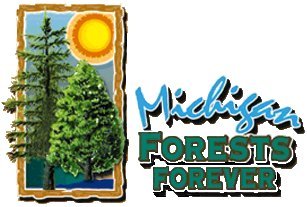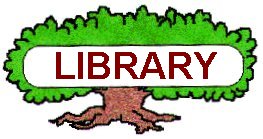

Home Page |
MICHIGAN FORESTS FOREVER TEACHERS GUIDE
| SOIL TEXTURE BY FEEL |  |
Soil texture has to do with relative particles sizes. Sand, silt, and clay are the three basic classifications. Soil texture has a lot to do with soil properties. A sandy soil will not hold much water and is prone to drought. Sandy soils are also relatively infertile. A clay soil can hold large quantities of water, but because of the tiny pore spaces may not yield the water during dry conditions. Silt is often incorrectly called clay by many people, because it is sticky when wet, similar to clay. This doesn't make much difference when kids leave muddy tracks in the house or classroom, but it make a great deal of difference in establishing fertilizer and chemical treatments, or if you are a plant!
The following key will help determine soil texture by feel. Click here to see a soil texture triangle. To better understand soil terms and learn about soil associations in your area, consult a Soil Survey manual. They can be obtained from a Natural Resource Conservation Office or a public library. The NRCS also has an on-line Web Soil Survey. Take a bit of practice to use, but is a very useful tool.
Place about two teaspoons of soil in the palm of your hand. Add water by the drop and knead soil to break down clumps. Soil is the proper consistency when "plastic" and moldable like putty. If it's too wet, add more soil. Now you're ready to "work" the key (links are all located on this page, so you can also scroll the page).
Does the soil remain in a ball when squeezed? No? Yes?
If no, then the soil is a SAND.
If yes, does the soil form a ribbon? No? Yes?
Place the ball of soil between your thumb and forefinger, gently push the soil with your
thumb, squeezing it upward into a ribbon. Form a ribbon of uniform thickness and
width. Allow the ribbon to emerge and extend over your forefinger, until it breaks
from its own weight.
If no, then the soil is a LOAMY SAND.
If yes, does the soil
make a . . .
weak ribbon
(less than one inch long before it breaks)
medium
ribbon (1-2 inches long before it breaks)
strong
ribbon (over two inches long before it breaks
Weak Ribbon. Rub soil between fingers to feel for grittiness.
Very gritty . . . then you have a SANDY LOAM.
Very smooth . . . then you have a SILT LOAM.
Neither gritty or smooth . . . then you a LOAM.
Medium Ribbon. Rub soil between fingers to feel for grittiness.
Very gritty . . . then you have a SANDY CLAY LOAM.
Very smooth . . . then you have a SILTY CLAY LOAM.
Neither gritty or smooth . . . then you a CLAY LOAM.
Strong Ribbon. Rub soil between fingers to feel for grittiness.
Very gritty . . . then you have a SANDY CLAY.
Very smooth . . . then you have a CLAY.
Neither gritty or smooth . . . then you a SILTY CLAY.
Definitions
Sand: particles 0.05 to one millimeter, a soil
texture class with at least 85% sand.
Silt: particles 0.002 to 0.05 of a millimeter, a soil texture class with at least
80% silt.
Clay: particles less than 0.002 millimeter in diameter.
Loam: a mix of roughly equal parts of sand, silt, and clay.
Teacher Guide Link Soil Texture Triangle
 |
This website was developed and created by Michigan State University Extension for the teachers of the State of Michigan. |
Page Name:
SoilTexture.htm